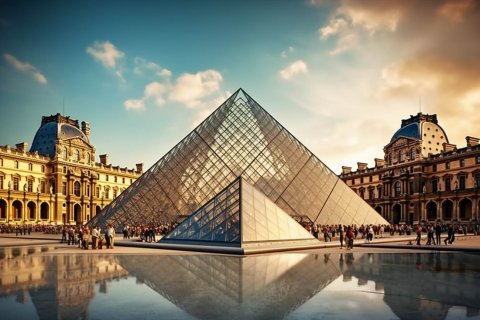Original Content Source: [Link](URL)
Why Did Louis XIV Leave The Louvre?
Louis XIV, also known as the Sun King, is a prominent figure in the history of France. His reign, which lasted for an astonishing 72 years, witnessed significant changes in the political, cultural, and architectural landscape of France. One of the intriguing aspects of his rule is his decision to leave the Louvre Palace and establish his royal residence elsewhere. This decision led to the development of the Tuileries Gardens and marked a crucial chapter in the history of French royalty.
The History of Tuileries Gardens
The Tuileries Gardens, or Jardin des Tuileries in French, is a beautiful public garden located in the heart of Paris. Its history is closely intertwined with the reign of Louis XIV and the evolution of French monarchy. To understand why Louis XIV left the Louvre for the Tuileries Gardens, we must delve into the history of this iconic green space.
The Tuileries Gardens were originally created in the 16th century during the reign of Queen Catherine de' Medici. The name "Tuileries" is derived from the tile factories (tuileries in French) that previously occupied the site. Catherine de' Medici, who was the widow of King Henry II, decided to build a magnificent palace and gardens on this land, inspired by the Italian Renaissance gardens of her youth.
Over the years, the gardens underwent several transformations and expansions. However, it was during the reign of Louis XIV that the Tuileries Gardens truly flourished. In 1664, Louis XIV commissioned the renowned landscape architect André Le Nôtre to redesign the gardens in the formal French style. Le Nôtre, famous for his work on the Palace of Versailles, created a masterpiece at the Tuileries Gardens, characterized by geometric patterns, grand promenades, and impressive fountains.
So, why did Louis XIV leave the Louvre for the Tuileries Gardens? There are several factors that contributed to this decision:
1. Space and Expansion
The Louvre Palace, although majestic, had limitations in terms of space. Louis XIV envisioned a grand royal residence that could accommodate his growing court and the extravagant lifestyle of the French monarchy. The Tuileries Gardens provided ample space for expansion and the construction of new buildings.
2. Escape from the Crowded City
Paris was a bustling and densely populated city during Louis XIV's reign. The Tuileries Gardens offered the king a tranquil escape from the noise and congestion of the urban center. It allowed him to enjoy the beauty of nature within the confines of his royal residence.
3. Symbolism and Power
Louis XIV was a monarch who valued the symbolic power of architecture and landscaping. The grandeur of the Tuileries Gardens, with its meticulously designed layout and majestic alleys, served as a symbol of the king's absolute power and authority. It was a testament to his ability to transform a former clay pit into a magnificent royal domain.
As a result of these factors, Louis XIV made the decision to leave the Louvre Palace in the late 17th century and establish his primary residence at the Palace of Versailles. However, the Tuileries Gardens remained an essential part of the royal complex in Paris, serving as a place for leisure, political gatherings, and grand festivities.
FAQs
Q1: When did Louis XIV leave the Louvre?
A1: Louis XIV left the Louvre Palace in the late 17th century, primarily moving his residence to the Palace of Versailles.
Q2: What is the significance of the Tuileries Gardens?
A2: The Tuileries Gardens are historically significant as they reflect the evolution of French monarchy, landscape design, and the symbolic power of the monarchy during Louis XIV's reign.
Q3: Who designed the gardens at the Tuileries?
A3: The renowned landscape architect André Le Nôtre designed and transformed the Tuileries Gardens into their formal French style during Louis XIV's reign.



